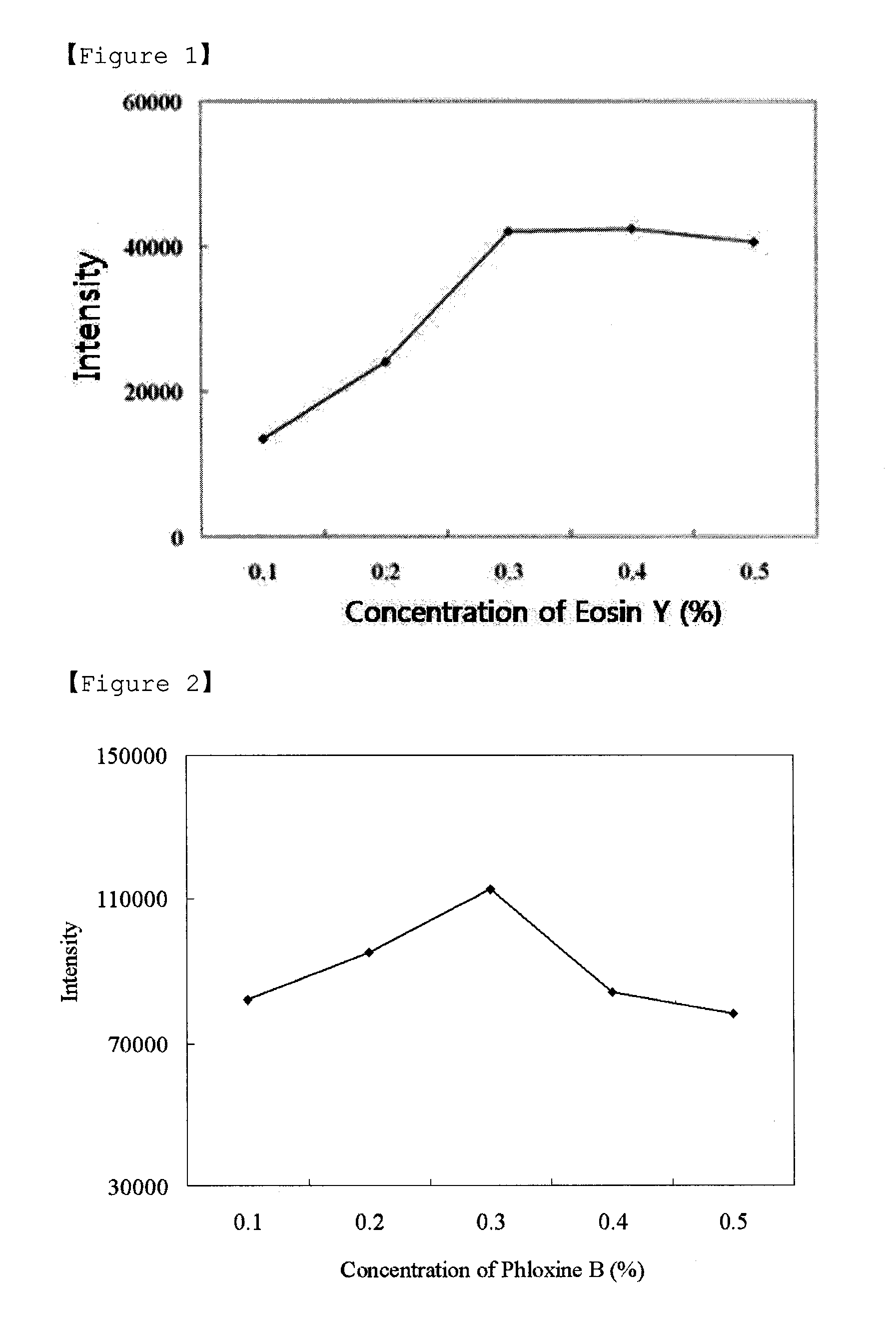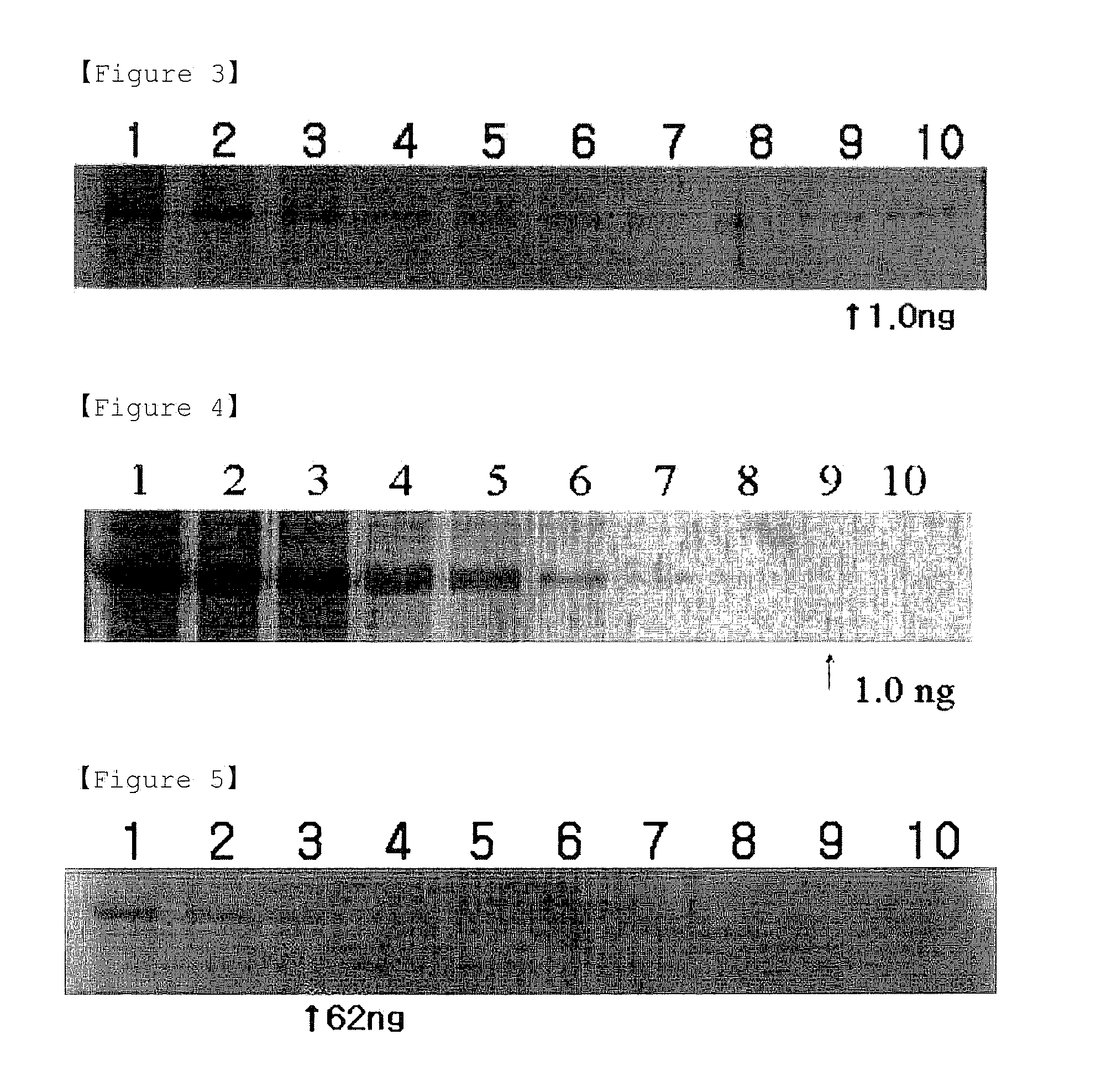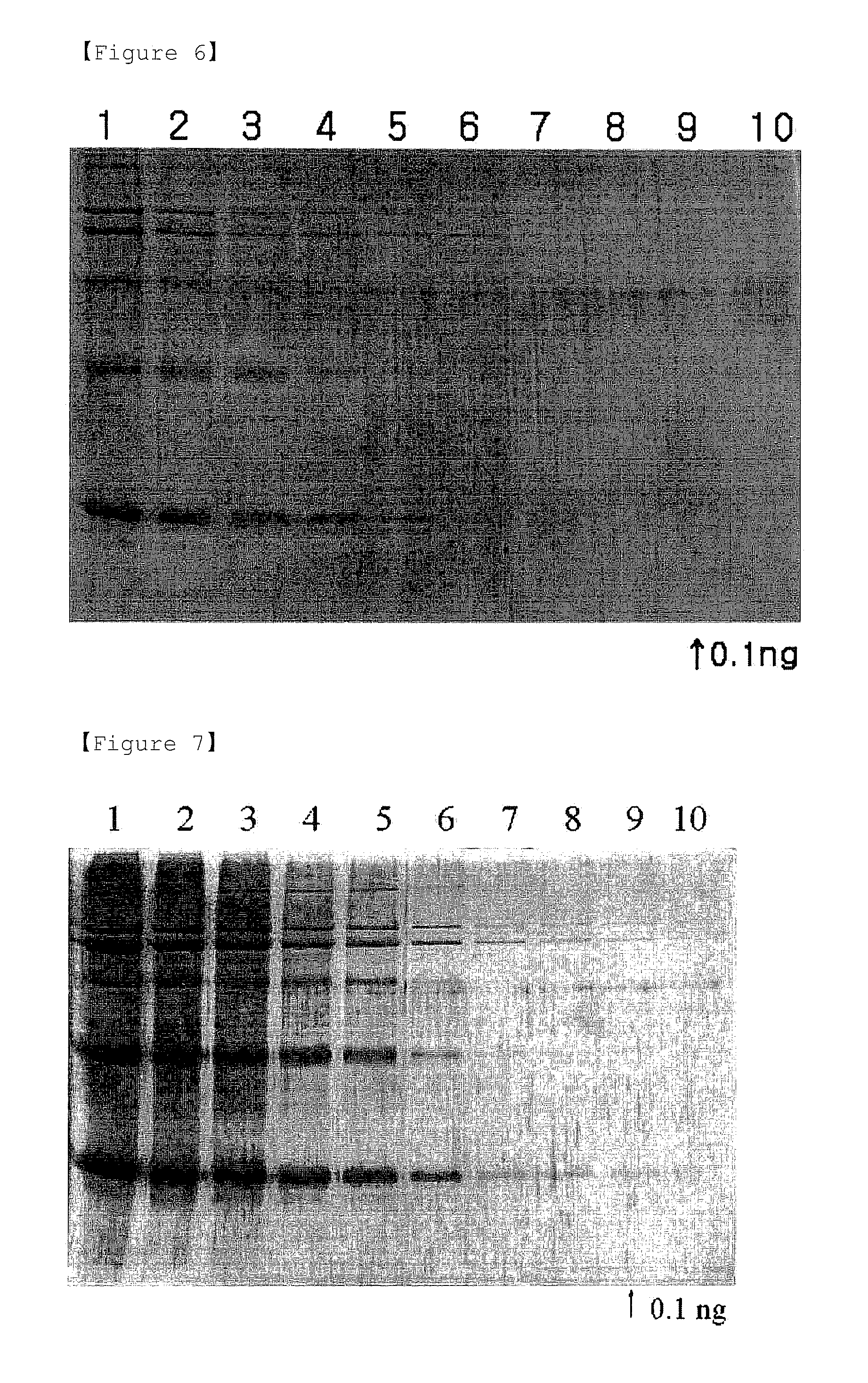Detection methods of proteins on polyacrylamide gels using gel background staining and organic dye compositions for the same
a polyacrylamide gel and protein technology, applied in the direction of benz-azabenzanthrone dyes, isotope separation, electrolysis, etc., can solve the problems of long time required for cbbr staining and destaining, low sensitivity, and complicated multi-step processes, and achieve the effect of improving sensitivity
- Summary
- Abstract
- Description
- Claims
- Application Information
AI Technical Summary
Benefits of technology
Problems solved by technology
Method used
Image
Examples
example 2
Detection of BSA by Phloxine B Background Staining Method
[0057](1) Preparation of Gels and Electrophoresis
[0058]First, SDS-containing slab gels were prepared according to Laemmli's method. Protein concentrations were measured by Bradford's method using Bio-Rad Standard I for quantification of protein (see, Anal. Biochem. 151, 369-374). Before electrophoresis, protein samples, i.e., 250 ng, 125 ng, 62 ng, 31 ng, 15 ng, 8 ng, 4 ng, 2 ng, 1 ng and 0.5 ng of BSA, were heated in a sample buffer (70 mM Tris-HCl, pH 6.8, 11.4% glycerol, 3% SDS, 0.01% bromophenol blue, and β-mercaptoethanol) to 100° C. for 5 minutes. The developing buffer contained 0.025 M Tris, 0.2 M glycine and 0.1% SDS, and had a pH of 8.3. The gel had a thickness of 1 mm, and stacking gels (4.5%) with a length of 1.5 cm were stacked on separating gels (10%) with the ratio of acrylamide:bisacryamide of 30:0.8.
[0059]Then, 250 ng, 125 ng, 62 ng, 31 ng, 15 ng, 8 ng, 4 ng, 2 ng, 1 ng and 0.5 ng of BSA were loaded onto wells ...
examples 3 and 4
Detection of Protein Standards by Eosin and Phloxine B Background Staining Methods
[0064]The substantially same procedures as described in Examples 1 and 2 were performed, except that protein standards containing equal amounts of myosin (205 kDa), β-galactosidase (116 kDa), phosphorylase b (97.4 kDa), BSA (66 kDa), ovalbumin (45 kDa) and carbonic anhydrase (29 kDa) were loaded onto wells, at amounts of 200 ng, 80 ng, 32 ng, 12 ng, 5 ng, 2 ng, 0.8 ng, 0.3 ng, 0.1 ng and 0.04 ng, in order from the left.
[0065]The results are shown in FIGS. 6 and 7. As shown in FIGS. 6 and 7, background staining methods with eosin Y and phloxine B showed similar staining patterns to those of CBBR, zinc-imidazole and Sypro® Ruby staining methods (see, FIGS. 8-10).
[0066]However, the background staining methods with eosin Y and phloxine B allowed detection of the protein standards up to 0.1 ng. Therefore, it can be seen from the above results that the background staining methods using eosin Y and phloxine B...
PUM
| Property | Measurement | Unit |
|---|---|---|
| Fraction | aaaaa | aaaaa |
| Sensitivity | aaaaa | aaaaa |
Abstract
Description
Claims
Application Information
 Login to View More
Login to View More - R&D
- Intellectual Property
- Life Sciences
- Materials
- Tech Scout
- Unparalleled Data Quality
- Higher Quality Content
- 60% Fewer Hallucinations
Browse by: Latest US Patents, China's latest patents, Technical Efficacy Thesaurus, Application Domain, Technology Topic, Popular Technical Reports.
© 2025 PatSnap. All rights reserved.Legal|Privacy policy|Modern Slavery Act Transparency Statement|Sitemap|About US| Contact US: help@patsnap.com



